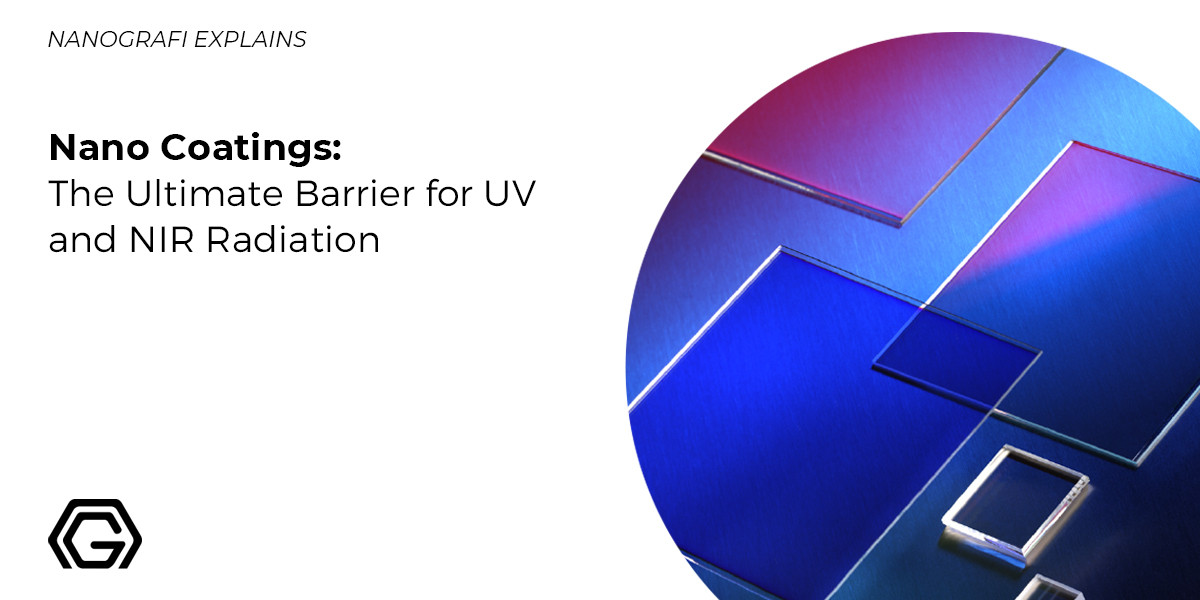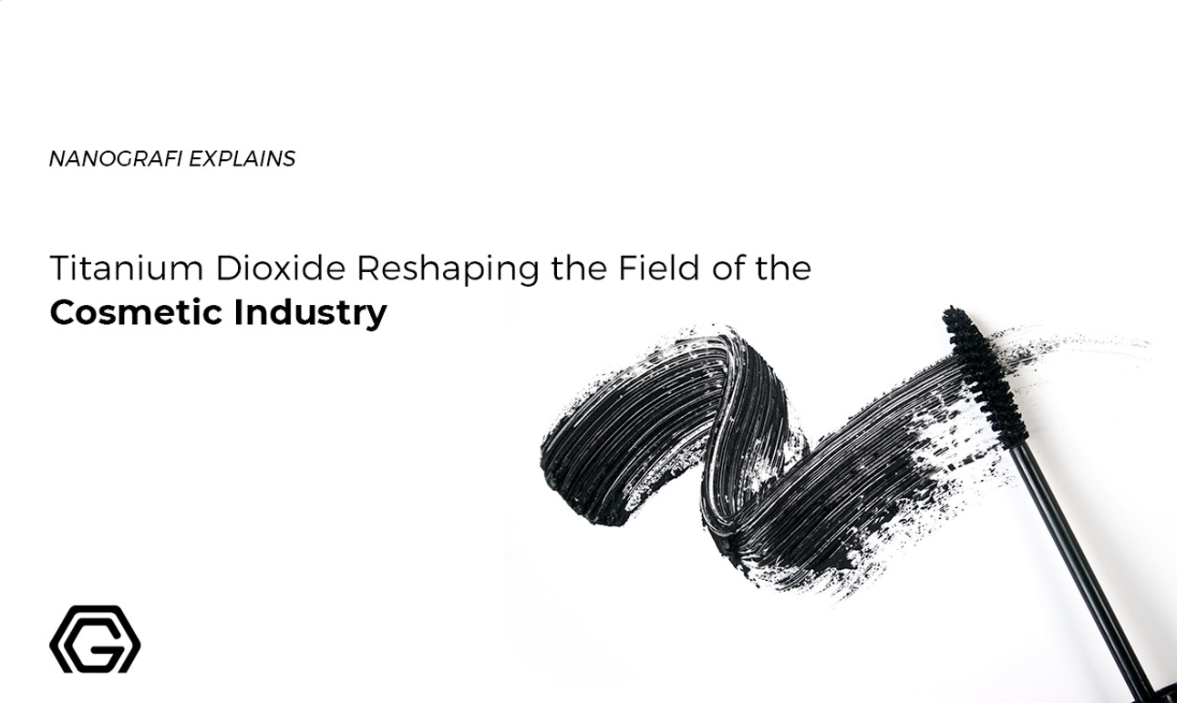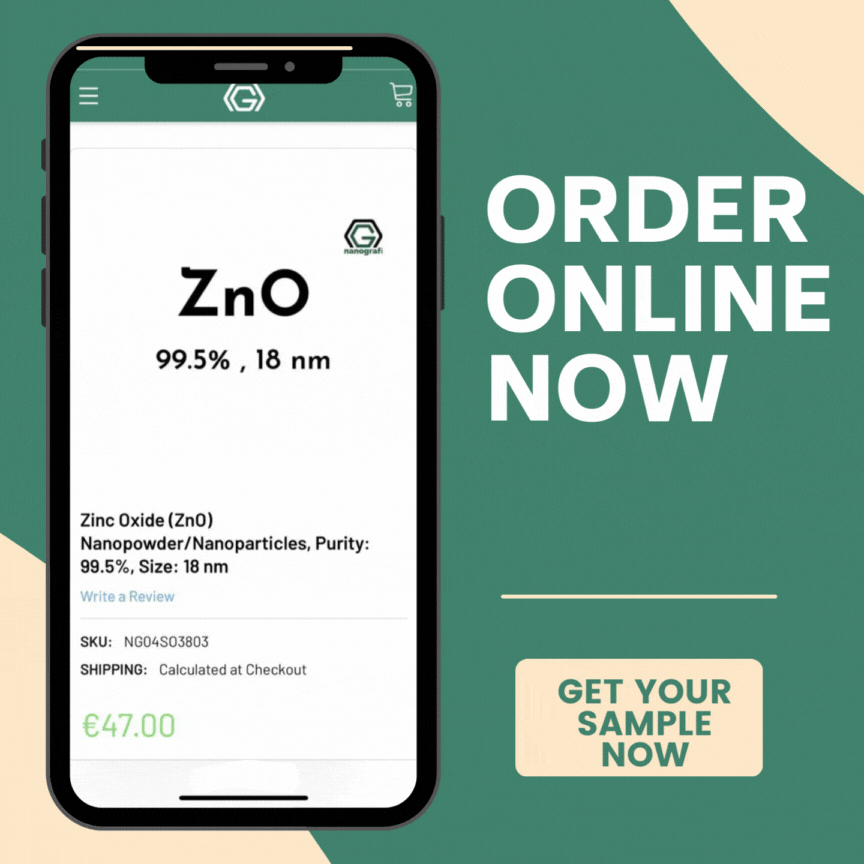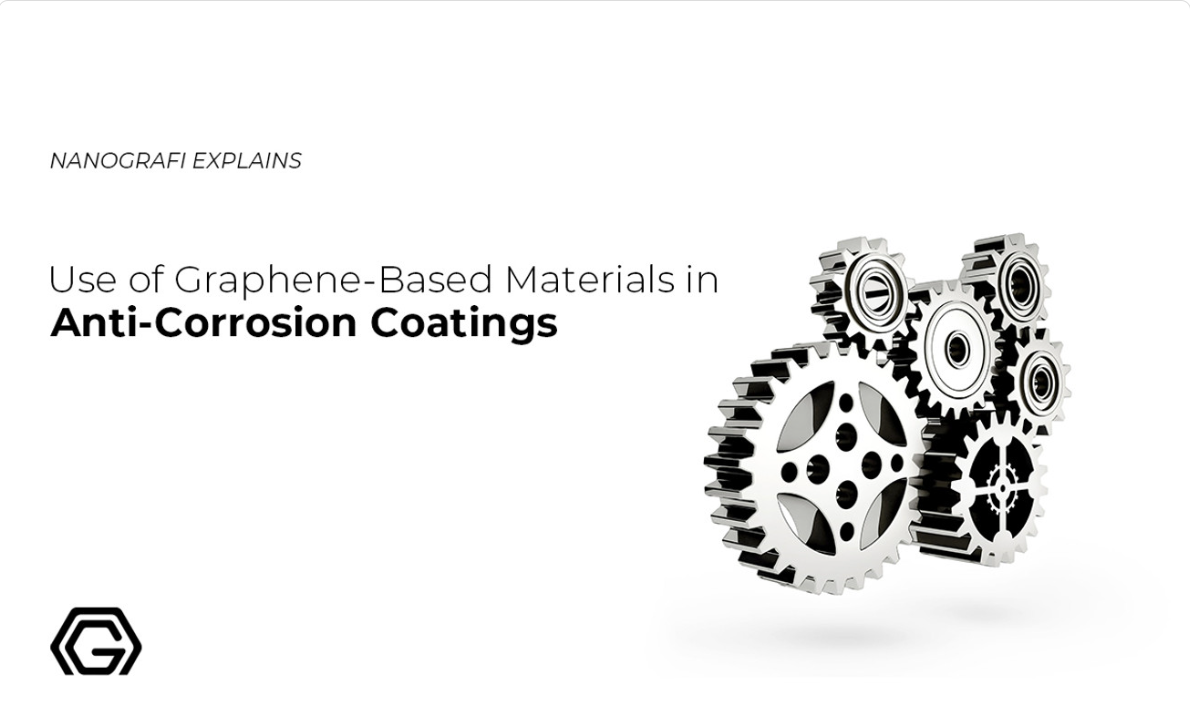Nano Coatings: The Ultimate Barrier for UV and NIR Radiation - Nanografi
Nano coatings play a significant role in providing protection against ultraviolet (UV) and near-infrared (NIR) radiation. UV and NIR radiation can be harmful to human health and can cause various issues, including skin damage, eye damage, and even an increased risk of certain types of cancer.
Therefore, it is essential to have effective measures to block or minimize exposure to these types of radiation. Nano coatings are thin films or layers that are engineered at the nanoscale level, typically ranging from a few nanometers to several hundred nanometers in thickness. These coatings can be applied to various surfaces, including glass, plastics, metals, and fabrics, to provide UV and NIR protection. Nanografi's products, utilizing nanocoating technology, enhance resistance against scratches, abrasion, and chemical impact, while forming a protective barrier on surfaces.
Introduction
Nano coatings offer advanced protection against ultraviolet (UV) and near-infrared (NIR) radiation, which can have detrimental effects on human health, including skin damage, eye disorders, and an increased risk of certain cancers. The unique properties of nanomaterials make them ideal for developing effective coatings. By precisely controlling the composition and structure of these coatings, researchers can customize their interaction with UV and NIR radiation, ensuring optimal protection across different applications.
Moreover, nano coatings exhibit excellent adhesion to various substrates, providing durable and long-lasting protection against radiation. Their ultra-thin nature preserves the original appearance and functionality of the coated surfaces without compromising visual clarity, transparency, or mechanical properties. This versatility allows nano coatings to be seamlessly integrated into a wide range of industries and products, from architectural glass and automotive windshields to personal protective equipment and textiles.
Why is the importance of nano coatings for UV and NIR protection?
Enhanced UV and NIR Blocking: Nano coatings are designed to block or absorb UV and NIR radiation effectively. They contain specially engineered nanoparticles or materials that have high UV and NIR blocking properties. These coatings can significantly reduce the amount of radiation transmitted through a substrate, thus minimizing exposure.
Improved Durability: Nano coatings are designed to be highly durable and long-lasting. They can withstand exposure to environmental factors such as sunlight, moisture, and temperature fluctuations without losing their UV and NIR blocking properties. This durability ensures consistent and reliable protection over an extended period.
Transparency and Clarity: Nano coatings can be engineered to have high transparency, allowing visible light to pass through while blocking UV and NIR radiation. This feature is crucial for applications where maintaining the aesthetic appearance of a surface is essential, such as architectural glass or automotive windshields.
Versatility: Nano coatings can be applied to various materials, including glass, plastics, fabrics, and metals. This versatility allows for their application in a wide range of industries and products, including eyewear, buildings, electronics, and even clothing.
Customizability: Nano coatings can be tailored to specific requirements, such as different levels of UV and NIR blocking. By modifying the composition and thickness of the coating, it is possible to achieve different levels of protection to suit the intended application.
Types of Nano Coatings for UV and NIR Blocking
1. Metal-based Coatings: These coatings use metallic nanoparticles, such as silver, gold, or aluminum, which have strong UV and NIR blocking properties. They can be applied to various substrates and offer high transparency in the visible light range.
2. Metal Oxide Coatings: Metal oxide nanoparticles, such as titanium dioxide (TiO2) and zinc oxide (ZnO), are often used in nano coatings for UV and NIR protection. These coatings have excellent UV blocking capabilities and can be applied to glass, plastics, and fabrics.
3. Organic UV Absorbers: Nano coatings can also incorporate organic compounds that act as UV absorbers. These compounds absorb UV radiation and convert it into harmless heat. They are often used in combination with other nanoparticles or polymers to create effective UV and NIR blocking coatings.
4. Multilayer Coatings: Multilayer nano coatings involve stacking multiple thin layers of different materials to achieve enhanced UV and NIR blocking. By carefully designing the layer thickness and composition, these coatings can provide a high degree of protection while maintaining transparency.
It is important to note that the performance and effectiveness of nano coatings for UV and NIR blocking can vary depending on factors such as coating composition, thickness, and application method. Therefore, it is crucial to consider the specific requirements and consult with experts when selecting and applying these coatings.
Fundamental Nano Coating Materials
Nano coatings are thin films of materials that are designed to provide specific functionalities, such as enhanced durability, scratch resistance, water repellency, or anti-corrosion properties. These coatings are typically composed of various nano-scale materials that contribute to their unique properties. Here are some fundamental nano coating materials commonly used:
a. Titanium Dioxide (TiO2)
Titanium dioxide is often employed in nano coatings for its photocatalytic properties, which enable self-cleaning and antimicrobial effects when exposed to UV light. It is commonly used in coatings for building surfaces, glass, and textiles
Titanium dioxide (TiO2) provides UV blocking by absorbing and blocking harmful UV radiation, protecting surfaces from fading and degradation. It also offers surface protection through its photocatalytic activity, self-cleaning properties, antimicrobial effects, and the formation of a protective barrier, which enhances durability and resistance against environmental factors. Titanium dioxide (TiO2) is commonly used in sunscreen for UV protection, glass coatings to block UV radiation, and the paint industry for vibrant colors and durability.
To learn about the role and uses of titanium dioxide in the cosmetic industry, read our blog.
b. Zinc Oxide (ZnO)
Zinc oxide is another material known for its photocatalytic properties and is often used in nano coatings for self-cleaning and antimicrobial purposes. It is particularly useful in outdoor applications, such as paints and coatings for buildings.
Zinc oxide is widely used in various applications, including sunscreens, textile products, and glass coatings. Here's a brief overview of its applications in these sectors:
- Sunscreens: Zinc oxide is a common ingredient in sunscreens due to its ability to provide broad-spectrum UV protection. It acts as a physical sunscreen agent by reflecting and scattering both UVA and UVB rays, helping to prevent sunburn, skin damage, and the risk of skin cancer.
- Textile Products: Zinc oxide is incorporated into textile products, such as clothing, hats, and accessories, to enhance their UV protection capabilities. Fabrics treated with zinc oxide can help block harmful UV radiation and provide an additional layer of sun protection for the wearer.
- Glass Coatings: Zinc oxide is used in glass coatings to improve their UV-blocking properties. It is applied as a thin layer on glass surfaces, such as windows, to block a significant portion of UV radiation from entering buildings or vehicles. This helps protect interiors from UV-induced fading, reduces heat buildup, and contributes to energy efficiency by reducing the need for excessive cooling.
c. Indium Tin Oxide (ITO)
Indium tin oxide (ITO) is a versatile nano coating material that combines electrical conductivity with optical transparency, making it a valuable component in numerous electronic and optoelectronic devices. Its applications range from touchscreens and displays to solar cells and antistatic coatings.
ITO exhibits high conductivity, thanks to the presence of free electrons within the material, which enables efficient conduction of electric current. Its low resistivity allows ITO to conduct electrical signals without significant losses, making it suitable for various applications including transparent electrodes, electrical contacts, and interconnects. Additionally, ITO is transparent in the visible spectrum, meaning it allows visible light to pass through with minimal absorption or scattering. This optical transparency enables ITO coatings to transmit light effectively and maintain the visual quality of substrates or devices coated with them. As a result, ITO is widely used in applications where optical transparency is crucial, such as displays, touchscreens, windows, and other optoelectronic devices.
Indium tin oxide (ITO) finds extensive applications in touchscreens, smart windows, and solar panels due to its unique combination of high conductivity and optical transparency. Here's an overview of its uses in these specific areas:
- Touchscreens: ITO is widely utilized in touchscreens, including those found in smartphones, tablets, and other electronic devices. ITO coatings are applied as transparent conductive layers, forming electrodes that enable touch sensitivity and accurate detection of touch inputs. The high conductivity of ITO allows for efficient transmission of electrical signals, while its optical transparency ensures minimal impact on display quality.
- Smart Windows: ITO coatings are used in the manufacturing of smart windows, which can dynamically adjust their transparency to control the passage of light and heat. In smart windows, ITO serves as a transparent conductive layer that enables the application of an electrical field to change the window's optical properties. By applying voltage, the transparency of the window can be altered, regulating the amount of light and infrared radiation passing through. ITO's high conductivity and transparency make it an ideal choice for this application.
- Solar Panels: ITO coatings are employed in solar panels and photovoltaic devices to enhance their performance. They are applied as transparent conductive electrodes, allowing for efficient collection and transport of electric charge generated by sunlight. The high conductivity of ITO facilitates the flow of current within the solar panel, while its transparency enables the transmission of sunlight to reach the underlying active layers, maximizing energy conversion efficiency.4
Read our blog to explore the future of solar cells with nanotechnology.
d. Graphene
The relationship between graphene and UV and NIR (Near Infrared) radiation is related to the use of nano coatings. Graphene is a material composed of single atomic layers of carbon and possesses unique electrical, thermal, and optical properties.
Graphene-based nano coatings can prevent or minimize the penetration of UV and NIR rays by absorbing or reflecting them. These graphene coatings can provide a protective barrier for applications such as solar panels, glass surfaces, optical devices, electronic devices, and many others.
Such coatings can help prevent material degradation, heat accumulation, and energy losses caused by ultraviolet and infrared radiation. Additionally, the unique properties of graphene can enable the design of more sensitive and efficient devices.
To get more information about use of graphene-based materials in anti-corrosion coatings, visit our blog.
e. Carbon Nanotubes CNTs
Firstly, carbon nanotubes have a high aspect ratio, which means they have a large surface area compared to their volume. This allows for effective dispersion within the coating material, ensuring uniform coverage and protection.
Secondly, CNTs exhibit excellent electrical conductivity, which enables them to dissipate the absorbed radiation energy efficiently. UV and NIR radiation can generate heat, and CNTs can effectively conduct and distribute this heat, preventing it from damaging the coated surface.
Additionally, CNTs have high mechanical strength, which contributes to the durability of the nano coating. They can withstand harsh environmental conditions, including exposure to UV and NIR radiation, without degradation.
f. Dual-Layered Sulfur Oxide (CSO.33WO3)
Dual-layered sulfur oxide, also known as CSO.33WO3, is a composite material consisting of two distinct layers: a layer of sulfur oxide (CSO) and a layer of tungsten oxide (WO3). This composition combines the properties of both sulfur oxide and tungsten oxide, offering unique characteristics and potential applications. Here's an overview of CSO.33WO3:
Sulfur Oxide (CSO) Layer: The CSO layer in CSO.33WO3 is typically composed of elemental sulfur combined with oxygen. Sulfur oxides are known for their redox properties and high conductivity, making them suitable for electrochemical applications. The CSO layer contributes to the overall conductivity and electrochemical behavior of the composite material.
Tungsten Oxide (WO3) Layer: The WO3 layer in CSO.33WO3 consists of tungsten atoms bonded with oxygen. Tungsten oxide is a semiconducting material with excellent optical and electrochromic properties. It exhibits reversible color changes upon the insertion and extraction of ions, making it suitable for applications in smart windows, displays, and sensors.
Composite Material Properties: The combination of the CSO and WO3 layers in CSO.33WO3 results in a synergistic effect, combining the conductivity of sulfur oxide with the electrochromic and optical properties of tungsten oxide. The specific ratio of CSO to WO3 in the composite determines the material's overall conductivity, electrochemical performance, and optical characteristics.
Dual-layered sulfur oxide (CSO.33WO3) offers a wide range of applications in energy storage, electrochromic devices, and gas sensors. Its high conductivity and redox properties make it highly suitable for energy storage applications such as rechargeable batteries and supercapacitors. The combination of tungsten oxide and sulfur oxide in CSO.33WO3 enhances its electrochromic properties, making it an excellent choice for use in smart windows, displays, and adaptive eyewear. The material's conductivity and surface reactivity also enable its utilization as a gas sensor for the detection and monitoring of specific gases.
Overall, CSO.33WO3 exhibits great potential in terms of improving energy efficiency, enhancing visual experiences, and facilitating environmental monitoring in various technological applications. Ongoing research and development efforts are focused on optimizing the performance of CSO.33WO3 and similar dual-layered sulfur oxide composites to further unlock their capabilities and expand their applications.
Conclusion
In summary, nano coatings are significant for UV and NIR protection as they offer tailored and durable solutions to block or absorb harmful radiation. Their versatility, long-lasting performance, and broad range of applications make them crucial for ensuring the safety, longevity, and performance of surfaces exposed to UV and NIR radiation.
Nano coatings have vast potential for applications in healthcare, energy, electronics, smart surfaces, 3D printing, and sustainable coatings. Future developments may focus on biomedical uses, environmental technologies, flexible electronics, smart surfaces, green coatings, and nanocomposites. Continued advancements in nano coatings are set to drive innovation and enhance various industries. Be a part of Nanografi and contribute to providing protection against ultraviolet (UV) and near-infrared (NIR) radiation with our nanocoating products.
References
Future of Solar Cells with Nanotechnology Solar Energy - Nanografi Nano Technology. (n.d.). Retrieved March 6, 2024, from https://nanografi.com/blog/future-of-solar-cells-with-nanotechnology-solar-energy/
Nanostructured Solar Cells - Nanografi Nano Technology. (n.d.). Retrieved March 6, 2024, from https://nanografi.com/blog/nanostructured-solar-cells/
Near-infrared spectroscopy - Wikipedia. (n.d.). Retrieved March 6, 2024, from https://en.wikipedia.org/wiki/Near-infrared_spectroscopy
(PDF) UV protection finishing of textiles using ZnO nanoparticles. (n.d.). Retrieved March 6, 2024, from https://www.researchgate.net/publication/279585204_UV_protection_finishing_of_textiles_using_ZnO_nanoparticles
The Use of Graphene-Based Materials in Anti-Corrosion Coatings - Nanografi Nano Technology. (n.d.). Retrieved March 6, 2024, from https://nanografi.com/blog/the-use-of-graphenebased-materials-in-anticorrosion-coatings/
Titanium Dioxide Reshaping the Field of the Cosmetic Industry - Nanografi - Nanografi Nano Technology. (n.d.). Retrieved March 6, 2024, from https://nanografi.com/blog/titanium-dioxide-reshaping-the-field-of-the-cosmetic-industry-nanografi-/
Ultraviolet - Wikipedia. (n.d.). Retrieved March 6, 2024, from https://en.wikipedia.org/wiki/Ultraviolet
Recent Posts
-
Advanced Materials for Unmanned Aerial Vehicle (UAV) Protection Against Laser
Consider a UAV on a critical mission, rendered inoperative by a sudden laser attack. With the increa …26th Jul 2024 -
Simulation and Modeling of Material Properties
Our world is composed of a dazzling array of materials, each with its own unique properties that dic …19th Jul 2024 -
Advanced Coatings for Superior Corrosion and Wear Resistance
Corrosion and wear pose significant challenges across various industries, leading to substantial eco …12th Jul 2024








